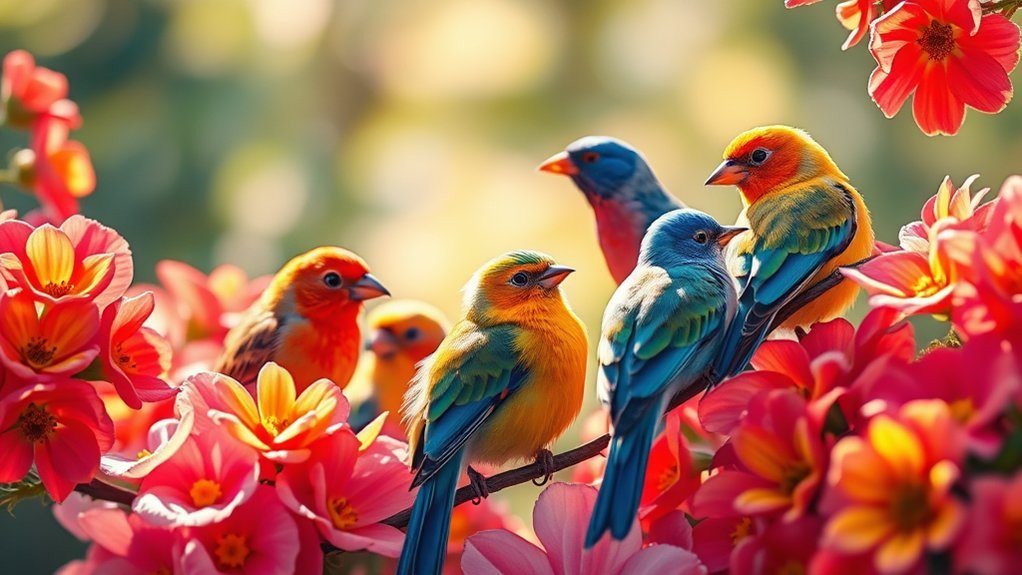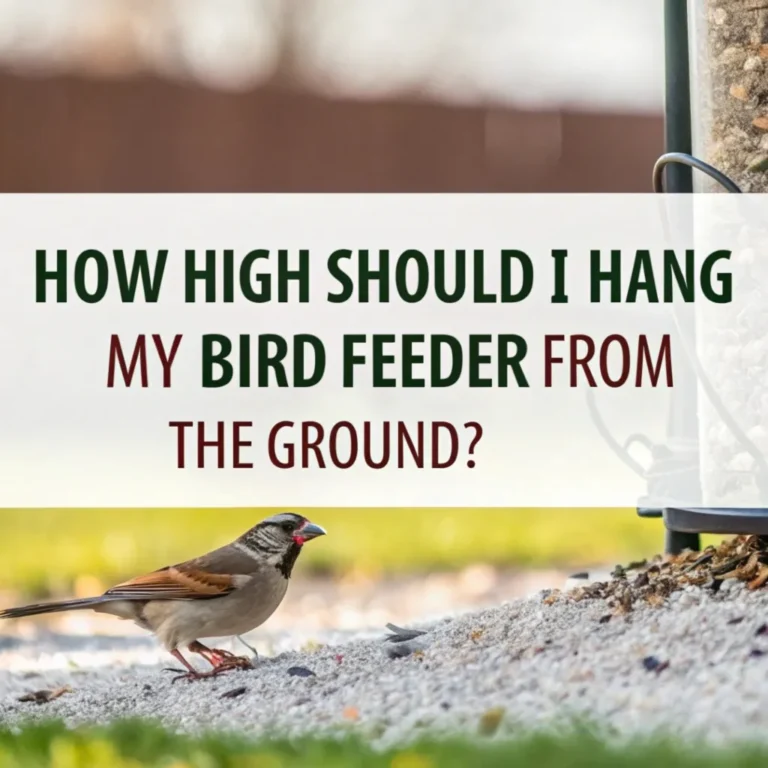What Colors Do Birds Prefer? Understanding Avian Vision
Birds have unique vision abilities that allow them to see a wider range of colors than humans, including ultraviolet light. This ability is crucial for their survival as it affects their mate selection and foraging behaviors. By studying these color preferences, we can understand how the environment and biological traits influence bird interactions. These insights can also reveal important connections within the ecosystem and its health.
Key Takeaways
Birds see many colors, including ultraviolet light. This ability helps them find food and choose mates.
Bright feather colors indicate good health. Birds with vibrant plumage attract potential mates during mating displays.
Birds' color preferences can change based on their environment. Forest birds often prefer greens and browns, while birds in open areas like brighter colors.
Seasonal shifts also impact how birds perceive colors, leading to changes in their preferences throughout the year.
Knowing these color preferences helps us understand bird behavior and their interactions with different habitats.
The Basics of Avian Vision
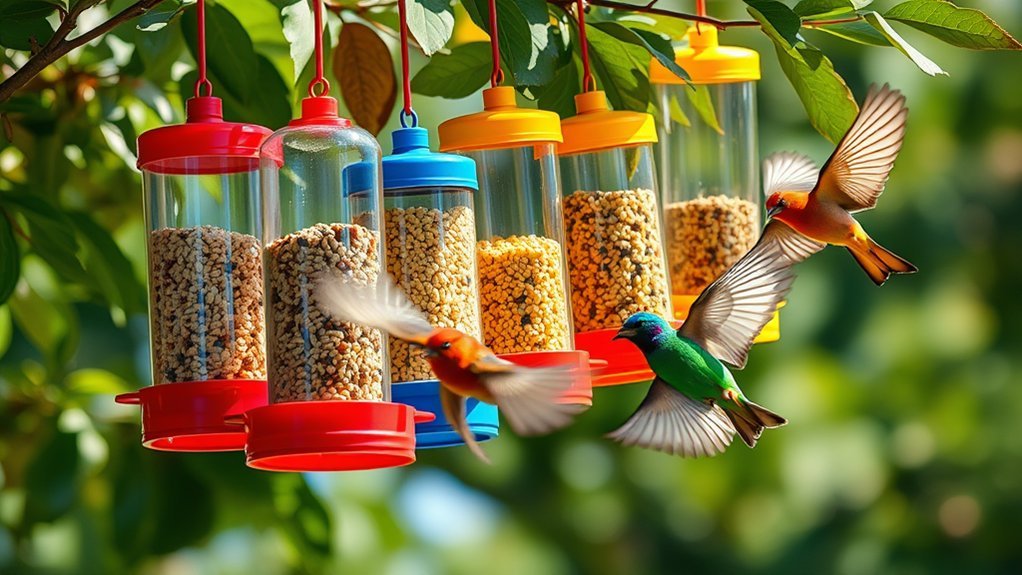
Birds have unique vision that helps them interact with their surroundings. Their eyes are often larger compared to their body size, which allows them to see fine details and long distances better than humans.
Birds have many photoreceptor cells, especially cone cells, which help them see a wide variety of colors. This ability lets them distinguish vibrant colors effectively.
Additionally, birds have two foveae in their eyes, giving them sharp vision for spotting prey and navigating through their habitats.
Understanding these features helps us appreciate how birds see and how it influences their behaviors and interactions in nature.
The Spectrum of Colors: How Birds See
Birds see more colors than humans. They can detect hues invisible to us due to their unique eye structure. Birds have specialized cells in their eyes that respond to different colors, including ultraviolet light. This ability helps them find mates, food, and avoid predators.
Their vision influences their behavior and where they live, making their environment vibrant.
Understanding how birds perceive color can deepen your connection to them. Learning about their vision enriches your appreciation of nature. It connects you with fellow bird lovers and enhances your overall birdwatching experience.
Ultraviolet Light: A Hidden Dimension
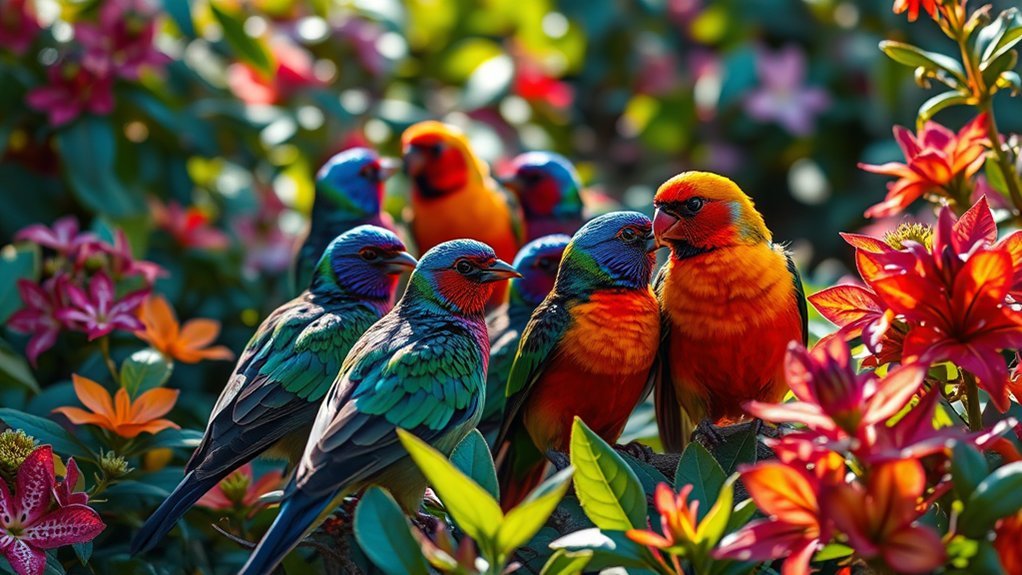
Ultraviolet light is important for birds because it helps them connect with their environment in unique ways. Birds can see ultraviolet light, which shows them colors that humans can't perceive. This ability helps them find food and avoid dangers. For instance, many flowers reflect ultraviolet light, making them easier for birds to spot.
Some birds have plumage that shows patterns in ultraviolet light, which can help them attract mates or defend their territory. Ultraviolet light also plays a role in how birds interact with each other. It can influence social behaviors like establishing dominance or finding a partner.
Color Preferences in Mating Rituals
Color preferences play a significant role in bird mating rituals. Birds use colors to attract mates. Bright colors often indicate good health, making these birds more appealing.
Male birds with vivid feathers are more likely to attract females who want healthy partners for breeding. This focus on color isn't just for looks; it helps species survive and thrive.
Foraging and Color: Attracting the Right Food
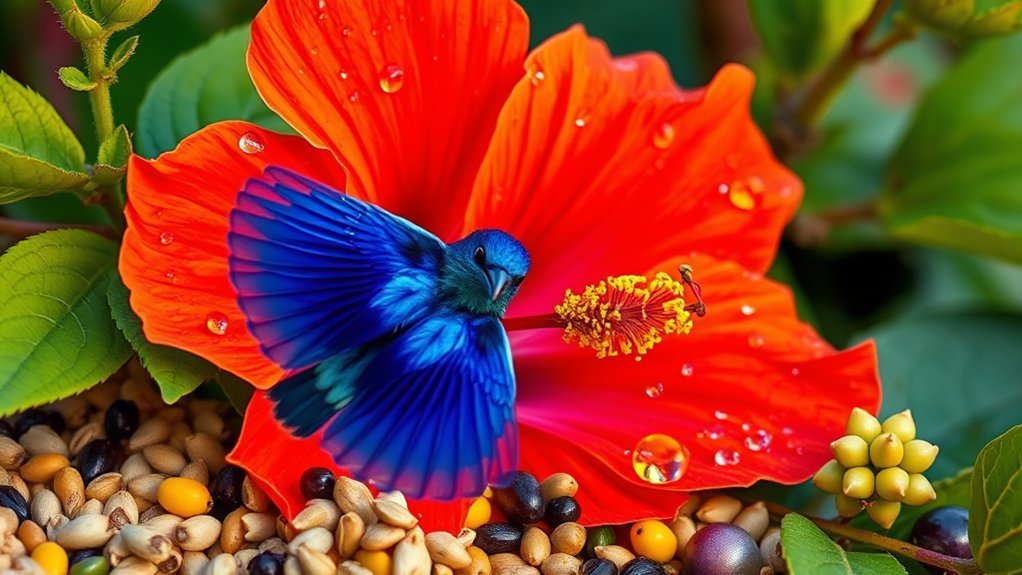
Birds use color to find food and attract mates. They prefer bright colors, like red, orange, and yellow, because these often indicate ripe and nutritious fruits and seeds.
This color preference helps them locate energy-rich food sources efficiently. Birds see a wide range of colors, allowing them to identify different types of food in their environment.
Understanding these preferences can increase your appreciation for how birds forage and select their meals.
Environmental Influences on Color Perception
Birds don't just form color preferences from within; the environment also greatly affects how they see colors. Birds adapt their vision to fit their habitats. This means they can adjust how sensitive they're to the common colors around them.
For example, birds living in thick forests often pay more attention to greens and browns. In contrast, birds found in open fields might favor brighter colors. This adaptation helps birds deal with changes in light and seasons.
Understanding these factors shows that color perception isn't fixed. It changes with the environment, helping birds survive, find food, and succeed in mating. By recognizing these influences, you can gain a deeper appreciation for the dynamic nature of color perception in birds.
The Role of Color in Bird Communication
Color plays an important role in how birds communicate. It affects mating choices and territorial behaviors. Many bird species use colors to send clear messages during courtship or to show dominance.
Male birds often have bright feathers to attract females. Territorial birds use visual signals, like wing movements or specific color patterns, to warn rivals. These color signals indicate health and fitness, making social interactions in flocks more dynamic.
Implications for Conservation Efforts
Understanding birds' color preferences can significantly improve conservation efforts. By creating colorful habitats that align with birds' vision, we can enhance their survival.
Here are some practical steps:
- Revitalize habitats with vibrant plants to attract different bird species.
- Incorporate color in urban design to create appealing green spaces for birds.
- Educate the community about the role of color diversity in healthy ecosystems.
- Involve local residents in conservation projects that celebrate birds' color choices.
Implementing these steps fosters environments where birds can flourish, promoting biodiversity and ecological health.
Embracing color benefits birds and deepens our connection to nature.
Frequently Asked Questions
Do Different Bird Species Have Unique Color Preferences?
Different bird species have unique color preferences. These preferences help them communicate, attract mates, and find food. Birds adapt their color choices based on their environments. This variety showcases how birds have evolved to thrive in different habitats. Understanding these preferences can deepen our appreciation for the diversity of bird life.
How Do Colors Affect Birds' Nesting Behaviors?
Colors significantly affect how birds choose nesting materials. Bright colors serve as signals for birds, helping them find the right spots to build nests and potential partners. This behavior leads to better reproductive success in their habitats. Understanding these patterns can help us appreciate the ways birds interact with their environment.
Can Birds Distinguish Between Shades of the Same Color?
Yes, birds can tell apart different shades of the same color. They have advanced color vision, which helps them notice small differences in their surroundings. This skill is useful for finding food and selecting mates.
What Role Do Colors Play in Bird Health or Well-Being?
Colors play an important role in a bird's health and well-being. Birds respond to colors in their environment. Bright colors can indicate good health and happiness. These colors show a bird's liveliness and ability to thrive. Understanding these color cues can help owners create a positive space for their birds.
How Do Seasonal Changes Impact Birds' Color Preferences?
Seasonal changes affect birds' color choices. Birds change their plumage to match their environment during different seasons. This helps them blend in for protection, attract mates, and show their health. These adaptations impact their ability to survive and reproduce.

Ava is a bird enthusiast and nature lover who has spent countless hours observing and learning about the fascinating world of birds. With a passion for sharing her knowledge and inspiring others to appreciate the beauty of birds, Ava writes about her experiences and insights on avianadmirer.com.

